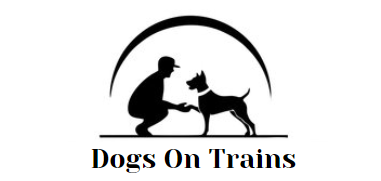Disc bulges are a common cause of back pain and discomfort affecting millions of people worldwide. Conditions like superimposed disc protrusions in the central region disc bulges that touch nerve roots, eccentric bulges and paracentral protrusions can lead to significant back pain and mobility issues. Understanding these conditions and investigating solutions that work is vital for reducing pain and improving quality of life. Dr. Ken Nakamura offers insight and tips on how to treat these conditions.

What is a Disc Bulge?
A disc bulge happens in the intervertebral disc that acts as a cushion between the vertebrae, extends beyond its normal boundaries. It could happen because of wear and tear, injury or degeneration that occurs over time. The severity of disc bulges can range from minor protrusions with few or no symptoms to larger bulges that may cause discomfort and pain.
Superimposed Central Protrusion of Disc
Central disc protrusions superimposed can be described as a kind of bulge in the disc that occurs centrally inside the spinal canal. According to Dr. Ken Nakamura, this protrusion could result in pressure on the nerve roots or spinal cord, leading to symptoms such as pain, numbness, or weakness in the affected area. It’s challenging to treat this condition because of its central location and the possibility for it to be felt on both the right and left sides of the body.
Disc Bulge Abutting Nerve Root Treatment
A disc bulge that irritates the nerve may cause severe pain and neurological symptoms like sciatica. Sciatica can be described as a pain which radiates from the rear of the leg. The pressure placed on the nerve root may result in pain, inflammation or even the loss of functionality if untreated.
Dr. Nakamura explains that disc bulges that are in contact with nerve root treatment a nerve root generally involves a combination of conventional and, in some cases, interventional approaches. Therapy, anti-inflammatory medication and a modification of activity can be used as non-invasive treatments to decrease pressure on affected nerves. In more serious cases, epidural steroid injections or surgeries may be required to relieve the pressure and offer relief.
Eccentric Disc Bulge
An eccentric disc bulge refers to a bulge that is off-center, usually to one side of the spinal canal. This type can produce symptoms that are unilateral. The the pain and other symptoms tend to be felt only on one side. The discs that are bulging in the center are especially dangerous because they can compress nerve roots and trigger localized weakness or pain.
Dr. Nakamura emphasizes the fact that the treatment of an eccentric disc bulge requires physical therapy that strengthens the muscles that surround your spine. It also improves flexibility. This may help alleviate symptoms and ease pressure on the affected discs. The treatment is a non-surgical procedure that can reduce bulges and relieve nerve irritation, can be recommended in some cases.
Paracentral Protrusion
Paracentral protrusions can occur when disc bulges are situated in the middle of the spine, but on the side. It may also result in nerve root pressure that is similar to the other kinds of bulges. Signs of it include an aching, numbness or weakness.
Dr. Nakamura suggests that paracentral protrusions can be treated using an array of conservative treatments. This may include physical therapy, pain management techniques along with lifestyle modifications. In the most severe cases of paracentral protrusions, surgery is often required to remove the disc material that protrudes and then decompress the nerve.
Control Disc Bulge Pain
The treatment of disc bulge pain is contingent on the severity and specific symptoms of the problem. In mild-to-moderate cases it is common for conservative treatments to be efficient in reducing pain and improving function. It could include:
Exercises for Physical Therapy: Individualized exercises to strengthen the muscles supporting the spine, improve flexibility, and decrease pressure on the affected discs.
Pain Management Use of anti-inflammatory medications and muscle relaxants to reduce pain and inflammation.
Lifestyle modifications: Changes in daily activities to avoid exacerbating the condition, such as correct posture, ergonomic adjustments and avoid heavy lifting.
Interventional Treatments: In the event that conservative treatments fail, you may think about options such as epidural steroids injections, or surgical procedures that are minimally invasive.
The article’s conclusion is:
Knowing the specifics of conditions like superimposed central disc protrusion, disc bulge which abuts nerve root, an eccentric disc bulge and paracentral protrusion are vital to effective pain management. Dr. Ken Nakamura stresses the importance of recognizing symptoms and seeking treatment to lessen the pain, improve mobility, and boost the living quality. Management of disc bulges is crucial to live a pain-free and comfortable life regardless of whether it is through conservative measures or, in some instances surgical intervention.
